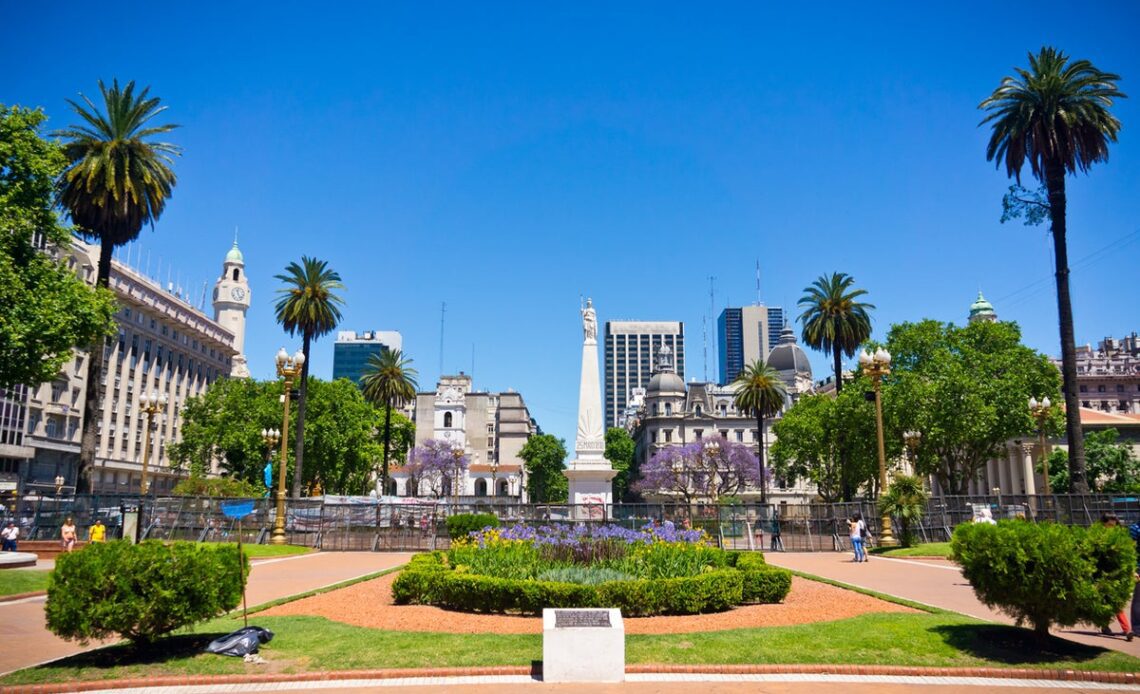They say Buenos Aires is the Paris of South America – but to be precise, it’s more like Madrid cut with a generous dollop of Manhattan. The exuberant old architecture of the Spanish capital is present and correct, but the city’s steroidal scale is what clinches the magnificence. Awesome multi-lane avenues run through it, and buildings are often so high they’re cloud-wreathed.
It’s what’s at street level that also seduces – dusty-designer neighbourhoods where steak restaurants don’t look a day over 150; glinting cocktail bars open all hours, and history of course, from Spanish origins onwards. This is a sprawling capital, so it’s worth doing some research on neighbourhoods and hotel locations beforehand. Once you’re immersed, settle in at a leaf-canopied pavement cafe and stay awhile, planning your naughty nocturnal itinerary. For which, read on…
(Getty Images)
What to do
In many ways it’s the little things – the personal items – on display that captivate most at this shrine to Evita Peron. Argentina’s controversial mid-20th-century First Lady stepped out in the most sensational wasp-waisted gowns, exhibited here; elsewhere they’ve got a box of her favoured Elizabeth Arden perfume, faded with age. Meanwhile, rooms of grainy rolling footage chart her early acting career, rise to world fame, fight for women’s rights and death in 1952 from cancer. Unmissable. Tuesday to Saturday, 11am-7pm.
Like a block of ice-cream, the seat of government cuts a mighty dash on Plaza Mayo, even though it is part-obscured by railings – and was occupied by a sole president between 1910 and 1914. Peron pilgrims come to view the balconies from which Juan and Evita drew adoring masses in the 1940s and 50s. Why rosada? Apocryphally the pink paint was a merging of opposing political colours (Federals red, Unitarians white). Come for the museum, which tells you the national story from colonial times onwards. Wednesday to Sunday and public holidays, 10am-6pm, entry and guided tours free.
At Buenos Aires’ landmark burial site, initiated in 1822 in the Recoleta district, visitors wander almost mute through a mini-city of the dead, along silent avenues of giant tombs and angel-crowned mausoleums of politicians and military names. Some are like Baroque churches, others Greek temples. Eternal Evita is here, too, of course. Her…
Click Here to Read the Full Original Article at The Independent Travel…
